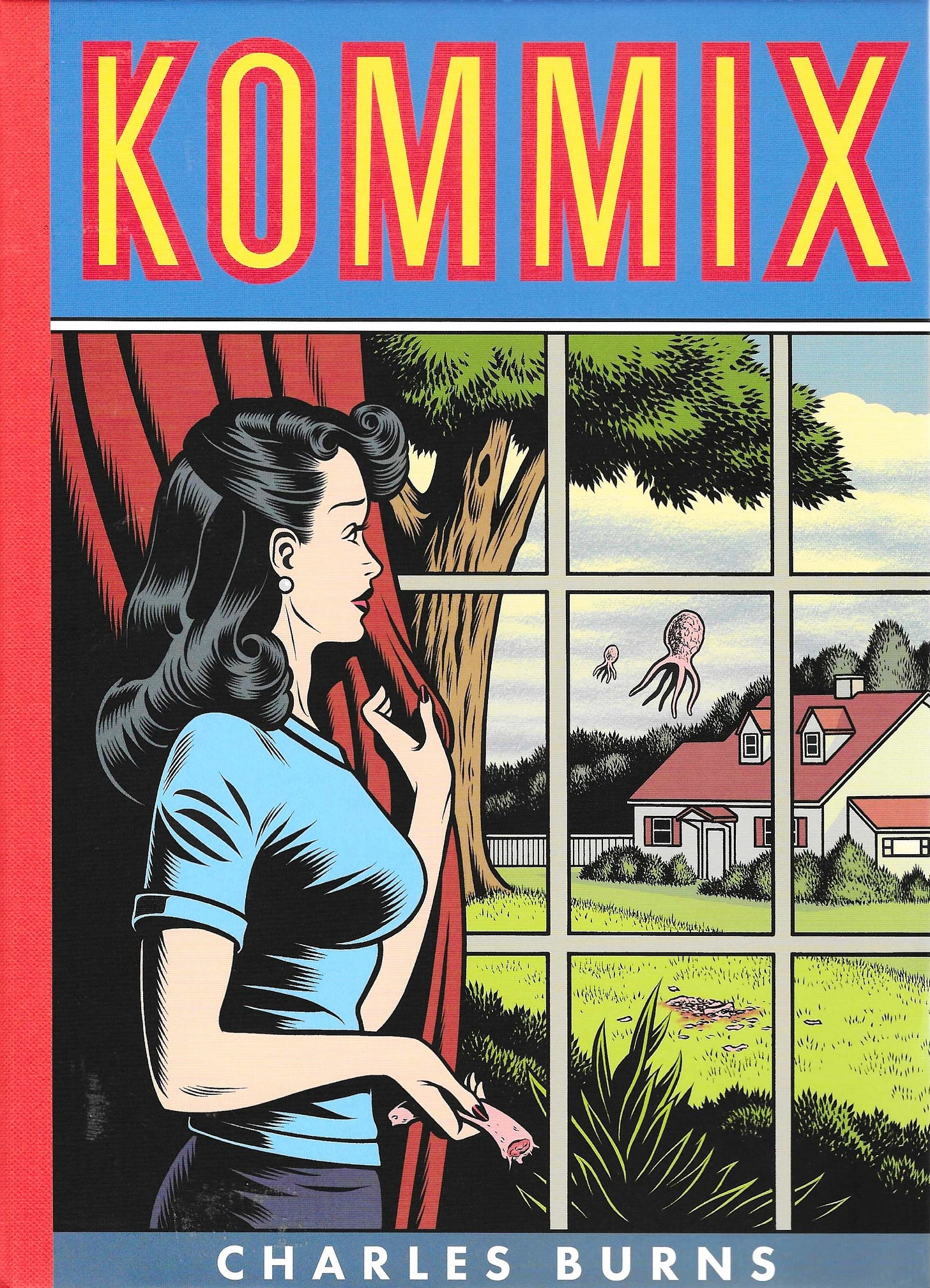When I was in high school, rock bands were a weirdly important part of my life. So much so that me and my friends developed a strange pastime of making up fictional bands and drawing fictional album covers for them. One fake band that sticks in my mind was a band called the “Cosmic Nirvanas” (beating out the nonfictional band Nirvana by over a decade) and their album was called The Vortex. (We were big into prog, as you might guess.) Why it was so entertaining to invent fictional bands is worth thinking about, but honestly I have no idea. It was a way to dive deeper into a collective subculture that I, along with millions of fellow late-70s teenagers, was an unwitting member of. But thinking about art that could have been created but wasn’t is a way of thinking about the culture(s) that produced the art. It can be a tool for understanding an artform’s history, but it can also be the site of adolescent comedy hijinks. Kommix by Charles Burns accomplishes both of these things.
This book consists of nothing but imaginary comic book covers. There is no story, the barest hint of narrative, no text except the words on the covers of the various fake comics. An book of artworks like this will usually have some kind of introduction or afterward, in which the artist or a scholar of the artist’s work seeks to contextualize the art you are seeing. There is nothing like that here—just page after page of images.
The cover is also a faux comic book, promising weird alien adventures inside—adventures that never arrive. The style is kind of a pastiche of 60s-era romance comics—I could see John Romita drawing this cover. Most of the women Burns draws in Kommix are “stacked” in the 1950s sense, which is period appropriate I guess.
Because comics have historically been a medium for children, comic book covers tended to be pretty tame, tamer even than the norms of society. In the USA, this social timidity was enforced by an industry-sponsored censorship regime called the Comics Code, but the lack of any images that parents would find objectionable was a universal standard. (Indeed when EC Comics, an important American comics publisher in the 1950s, published horror comics like Crime Suspenstories #22, parents went berserk. EC’s gruesome horror comics are 100% responsible for the Comics Code.)
Obviously Burns doesn’t have to worry about the Comics Code (which is long defunct, anyway.)
A comic book cover consists of a title—usually as a design element called a logo—and an image that reflects what’s going on inside (in theory). With this in mind, Burns creates three kinds of covers: comics with English language titles (in which the title becomes a punchline or an ironic commentary on the image). ones with foreign titles but roman alphabets, and titles in which the alphabet is completely foreign and we therefore have no idea what the title is. Burns gets to play around with a sensation that is experienced by American comics fans who try to broaden their interests by looking at non-English comics. Relating the title of the comic to its contents is so second-nature that when a monolingual American encounters, say, L’Echo des Savanes or Strapazin, much less a comic from China or Japan, there is a sense of dislocation, like you are floating and you can’t find any purchase under your feet. I think a lot of the pleasure here is that Burns simulates that dislocation with his beautiful pastiches. And a big part of that dislocation comes from the alienness of the images due to the distinctness of the cultures producing and consuming them. Burns cranks that alien feeling of up.
Keep reading with a 7-day free trial
Subscribe to The Great God Pan Is Dead to keep reading this post and get 7 days of free access to the full post archives.





